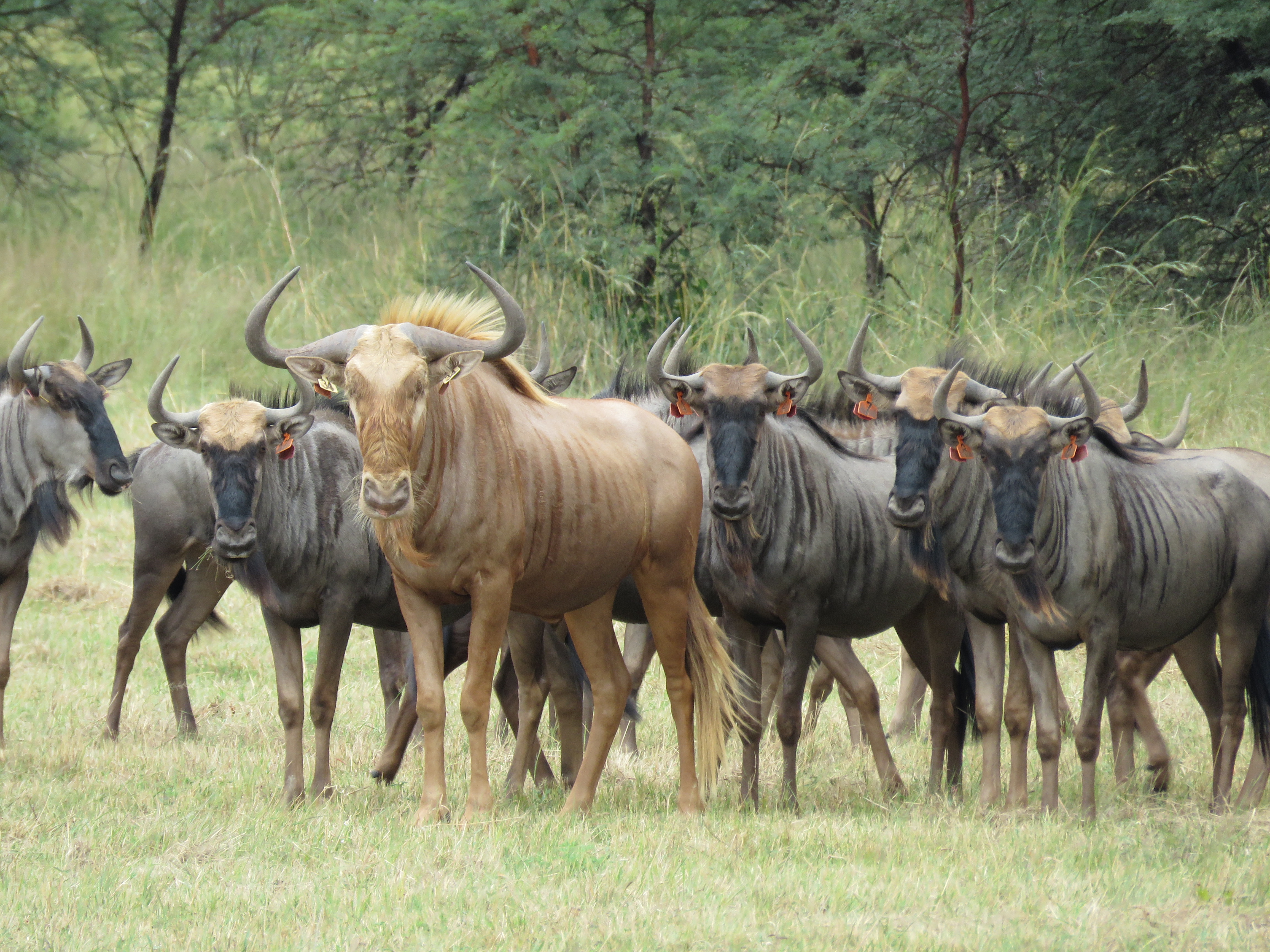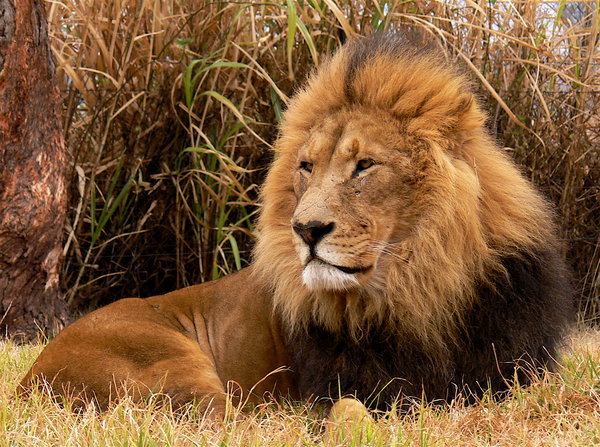
South Africa is one of two countries on the continent (Namibia, the other) that allow for citizens to own wild animals and the land to raise them on.
"There are an estimated 9000 wildlife ranches in South Africa covering approximately 20.5 million hectares (approximately 16.8% of the total land in South Africa)" reports a University of Birmingham study for Ecology and Society.
South African land-owners are finding that the big-game hunters will pay more for unique animals, like the white lion on the left compared to the normal colored one to the right.


Hunters will pay 100 times more ($50,000) for a chance to shoot a rare colored wildebeest than for a regular one. Conservationalists say that they are merely creating mutants for profit, to which the ranchers agree (but not on the mutant part), and say, "So what?"
In other parts of Africa where the state controls the wildlife restoration, populations are being decimated as budget cuts and bureaucratized management are not nearly as effective at preserving wildlife habitat or animals when compared to privately owned lands.
Barry York owns a 2,500-acre ranch about 135 miles east of Johannesburg. He is an expert breeder of these rare animals. After leaving Zimbabwe and breeding cattle for a time, he failed to turn a profit. After a hunting trip in 1986 offered him a chance to see a golden wildebeest he decided to change his focus. He tells Bloomberg:
“Previously this was crop land with pesticides, chemicals, very few trees, no wildlife,” he says. “Now there are hundreds of wildebeest where there were none for 100 years. The color variants are paying for it.”
Wouter van Hoven, an emeritus professor at the University of Pretoria says “Not a single country in the world has seen such a large increase in animal numbers over the last 50 years, It’s an incredible success story.”
Conservationalists deride:
"Despite the increase in populations of native species, conservationists deride the methods used by York and his fellow breeders. “What’s happening now is farming,” says Ainsley Hay, manager of the Wildlife Protection Unit of South Africa’s National Society for the Prevention of Cruelty to Animals. “It’s not conservation. It doesn’t matter if you’re farming cows or impala, it’s a damaging form of land use.”
Some environmentalists are worried these color variated animals will have a harder time surviving in the wild, however, color varied animals occur naturally and are obviously still around. People are now using them to attract millions to local economies which in turn benefit conservation efforts. York responds to the criticism saying, “They say these are Frankenstein animals, but where’s the test tube, where's the lab? Sure, the golden color is a rare characteristic, but it occurs in nature.”
Black Impala.
As it turns out, the variated colors of the animals is most likely a recessive gene, much the same as yellow labs are less common because the black lab gene is the dominant one. The claim that the color varied animals cannot breed is false, because breeders are even currently debunking that. A color varied animal can come from two normal colored animals as well. The genes identifying the color have not yet been identified.
These animals are not mutants, they are merely sought after for their unique colors and have the same genetic profile as their regularly colored brothers.
Here is a picture from York Family conservation land in South Africa showing the different colored calf nursing from the regularly colored mother.

According to a study out of the University of London
"State-managed parks face declining budgets, while an increasing number of private reserves are financially self-sufficient. Private management structures are more effective in capturing the economic value of biodiversity, and thereby turning conservation into a competitive form of land use. Beside the economic benefits accruing to landowners, private reserves and game ranches provide the public good ‘biodiversity’ at zero cost to the tax-payer. . . secure property rights to land and wildlife are an essential ingredient in any strategy to conserve and encourage long-term investment in wildlife habitat."
Barry York is one of the founder breeders of the Golden Wildebeest and his family has been dedicated to the conservation of nature and animals says:
"No industry, be it mining, manufacturing, industry, commerce has a greater conservation benefit to biodiversity conservation then the wildlife industry."
Golden Wildebeest


